Kenny Barron Voicing Tutorial
The Kenny Barron Voicing is an open-sounding minor 11th voicing. The voicing gets its name from the acclaimed jazz pianist Kenny Barron.
The voicing is made up of two perfect 5th intervals in each hand, separated by a minor 2nd interval in between. The perfect 5th intervals give the voicing its spacious sound and the minor second interval adds a touch of tension and dissonance.
How To Build The Kenny Barron Voicing
From bottom to top, the voicing is made up of the following scale degrees:
- Left Hand: Root (1) — 5 — 9
- Right Hand: b3 — b7 — 11
Memorising this formula will allow you to build the chord in all 12 minor keys. Notice that the top scale degree of the voicing is the 11th so when you’re reading lead sheets, look out for minor chords with the 11th in the melody.
Downloadable PDF Lesson Supplement
Download the Kenny Barron voicing in all 12 keys. This resource contains both the major and minor variations of this very useful chord voicing:
Variations Of The Kenny Barron Voicing
There are a number of different variations of the Kenny Barron voicing that can be used. The first variation is to double the 9th, by adding a triad at the top of the chord. In the key of D minor, this means adding a C major triad at the top of the chord.
The second variation is to double both the 9th and the 11th of the chord. This creates a thick, meaty voicing and really brings out the 11th colour of the chord. We can double the 11th using the right hand thumb which now plays two notes. This isn’t possible in all keys but works in most.
Major Variation Of The Kenny Barron Voicing
We can also change the quality of this voicing from minor to major simply by making the minor 2nd interval that separates the two hands into a major 2nd interval.
We keep the stacked 5ths in each hand but now instead of playing the b3, b7 & 11 in the right hand, we are playing the major 3rd, major 7th and sharp 11th . Remember that in major keys, we raise the 11th as the natural 11th is an ‘avoid note’ due to the half step interval between the major 3rd and the natural 11th.
Look out for major chords with the sharp 11th in the melody to utilise this major sharp 11 voicing.
Lesson Downloads
-
Kenny Barron Voicings File Type: pdf
Practice Tips
-
Practice both the major and minor variations of this voicing... they are both very useful.
-
Remember to memorise the scale degree formulas for all voicings that you learn. Then analyse the scale degree of the melody note whenever you are playing jazz standards.
-
To hear the Kenny Barron voicing in context, take a listen to the following records:


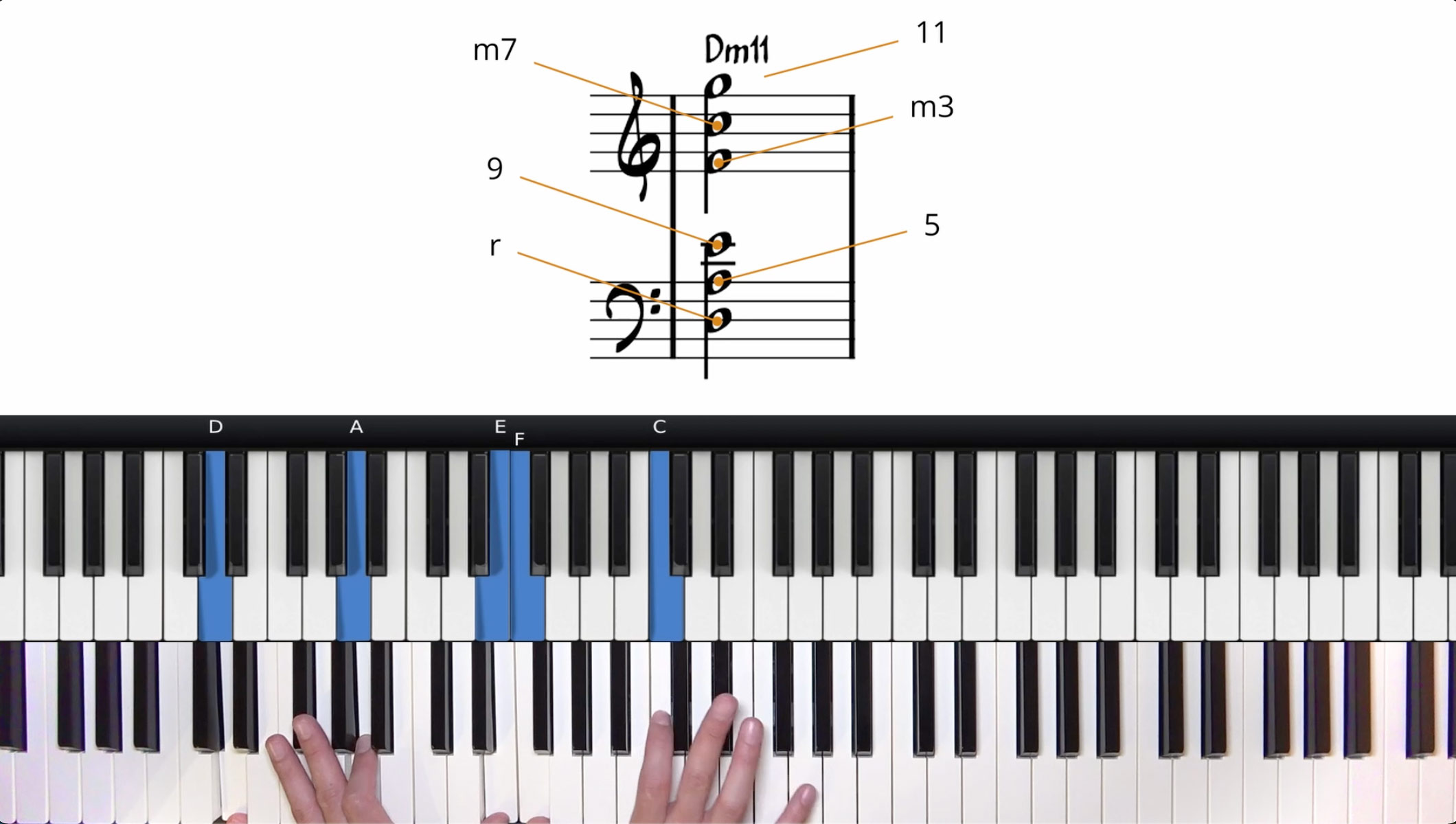
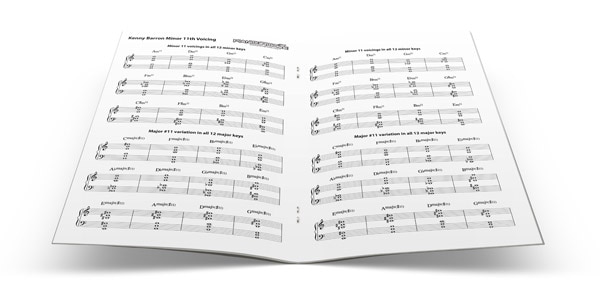

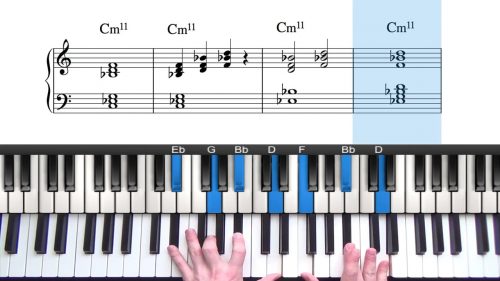
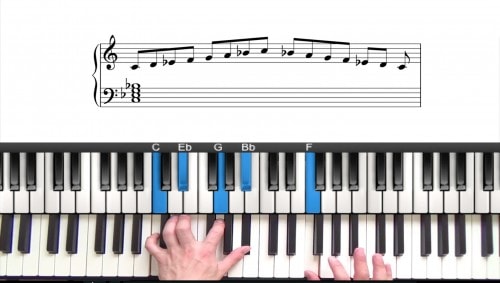
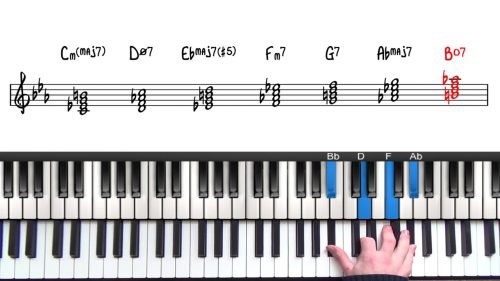


Nice video.
On the Kenny Barron, Major #11 score, on Ab maj9(#11) on the bass clef, Bb is not written.
Also on Gmaj9(11#) on the bass clef, A is not written.
Hi Ioannis, thanks for spotting this… the download has been corrected. Cheers, Hayden
Hi Hayden, amazing lesson – I find that conceptualizing the voicing as stacked 5ths make it more accessible to the beginner (easier to get under your hands quickly).
Apologies if this is a silly question but I’m struggling a bit with the notation in this lesson. For example, why is a Ab maj9(#11) a 9 chord and not an 11 chord? (i.e. why is the 11 in parentheses?) Or is this considered an 11 chord? I thought that the chord is named for whichever is the highest note…
Hi Matthew,
Apologies for the late reply here.
Good question!
The reason that the #11 is in parenthesis is that it is an alteration, and not an extension.
Alterations are extensions that have been raised or lowered by half a step.
The alterations are always placed after the chord extensions. For example:
C7b13 – Yes the chord contains a b13, but we would not write Cb13, because that implies that we are playing a Cb root, with a 13th.
Using your example of C9#11, the 9th is the highest tone which has not been altered, and so we have C9 with the alteration #11 in parenthesis afterwards.
I hope that helps Matthew, let me know if I can be of further assistance here.
Cheers!
Hayden
Hello Hayden..I have to thank you for your email..It will help me wonders on my jazz development.I can tell that you really care about your students/potential students..and it is a bit difficult to find that on the Internet.Cheers for that.I have a question.All this chord voicings must be executed on the first note of the melody?Can they be implemented later in the end of the melody?Imagine that we are going to play a cm chord and the compass has 6 melody notes .Can i still Apply the voicings on the last notes?Can i play a cm in root position and then use the voicings to módify the chord on the middle/end of the melody?
Hi Ivan, yes you can play the notes of the voicing at any time. This is a good thing to experiment with. If you play all the notes exactly with the melody, you playing might sound a little plain and predictable. The beauty of jazz music is that you have a lot of freedom to interpret the music as you see fit.
Everything that you ask here, yes you can do, and I would recommend that you try these things :-)
Hope this helps!
Cheers,
Hayden
I’m starting to feel like you really like this voicing haha. If you were to use the right hand voicing as a rootless voicing, would you include the 9 in between the 7 and the 11 or just drop it?
Hi Milan,
You should always have the 3rd and 7th in your voicings, all other notes are optional.
That’s is the best rule to stick to. The 3rd and 7th define the quality of the chord, and the other notes such as 9th and 11th are used to add colour.
I hope this helps!
Cheers,
Hayden
Are there any “Keith Jarrett chords”?
Hi TJ!
I’ll be honest, I haven’t studied much of Kieth’s music. A few years back, I did some transcription from his trio recording of Stella By Starlight but mainly from his right hand soloing.
From the recordings of his I have listened to, his voicings are often a little avant-garde (for me anyway :-). He often moves away from traditional voicing stacks such as chord built from 3rds. Instead, he places dissonant intervals here and there, which can obscure the tonality. It’s beautiful, original, and inventive. I look forward to studying it more myself.
If you read into his biography, Kieth studied with Bill Evans whilst in NYC, and so there will be obviously influences from Bill’s teachings, but with that being said, Kieth’s sound is completely unique and different to that of Bill’s sound.
They both use a lot of Sus voicings for sure!
Let’s create a new musician category in the forum for Keith Jarrett, and share some recordings. I’ll also speak with the other teachers and I’m sure they can share some insights into his mastery.
Cheers,
Hayden
ps. whilst these lessons show a particular type of voicing, an important thing to understand is the underlying concepts and principles.
For example, in this lesson on the Kenny Barron Voicing, the underlying concept is the beautiful spacious sound that can be achieved from stacking fifth intervals.
For the So What Lesson, the underlying concept is the angular, modern, ‘hip’ sounding voicings that can be achieved from stacking 4th intervals.
For the Herbie Hancock voicings, for me, it is the sound of that b3 and 11 voiced next to each other – creates such a rich and warm texture – and then the 9th on top in the melody for that sweet sound. Try inverting that chord by the way… sounds awesome! Also nice rootless.
Hope this helps.
Thanks Hayden. The reason I asked is that I think of his style in terms of melodic lines and rhythm motifs rather than signature voicings, but sometimes wonder whether I’ve just overlooked the latter. Are you listening much to Aaron Parks? He’s become my favorite young jazz pianist whether he’s playing as a soloist, band leader or sideman. If you think the same (?), a set of lessons someday on his playing style would be so interesting, also a nice change of pace from studying the greats of the last century.
Or more generally, perhaps a “New directions” course about pivotal young players that also includes Hiromi, the late Esbjörn Svensson, others…
Yes I think this is a fantastic idea, in the same way that in the forum we can vote on lesson topics, genres, standards,…. we could also create a vote for ‘stylistic lessons’ and list a number of jazz pianists like you mention.
Our teaching team can then create a breakdown of the stylistic aspects of the artists’ sound.
Really great suggestion…. leave it with me.
Cheers,
Hayden
Hi TJ, yes I have heard a few of his recordings but I must get around to listening to more of his work.
Hi Hayden
I have a question. While you are analyzing the voicing of the minor 11th, why did you call the third and the seventh ” flat third and flat seventh”. Those are not flat notes, may be I am missing some music theory
Thanks
Fuat
Hi Fuat 👋🏻
Good question!
By b3 and b7 and I just saying minor 3rd, and minor 7th.
I always relate everything back to the major scale and so I also see those notes as the b3 and b7.
For example, If I think of the C Dorian mode which can be used to play over a C-7 chord, I think of the C Major scale but with a b3 and a b7.
This helps me to identify the characteristic notes of the scale which I can then accentuate in my right hand.
Let me know if you have any further questions on this.
Cheers,
Hayden